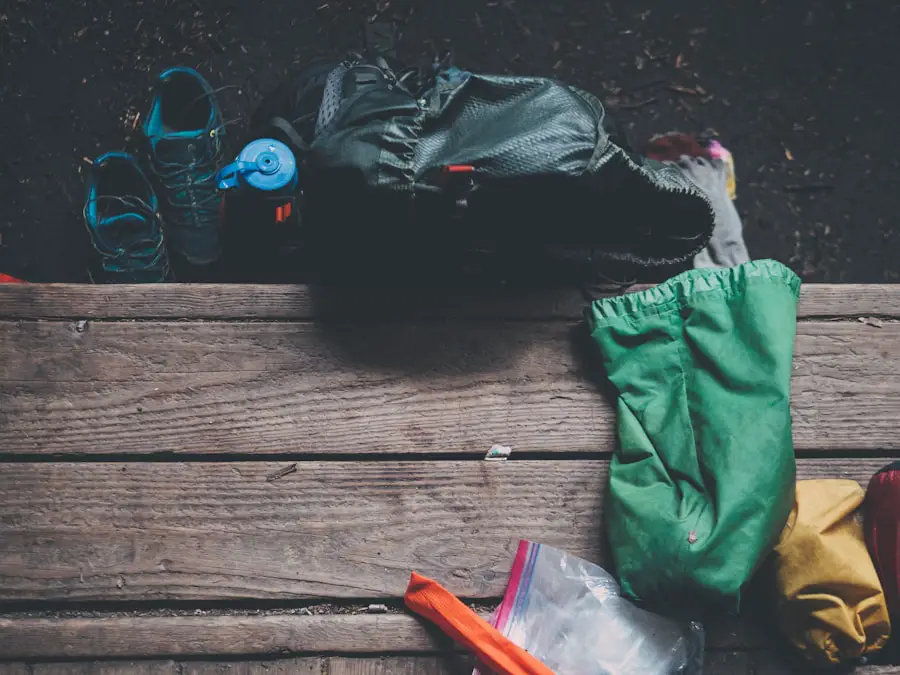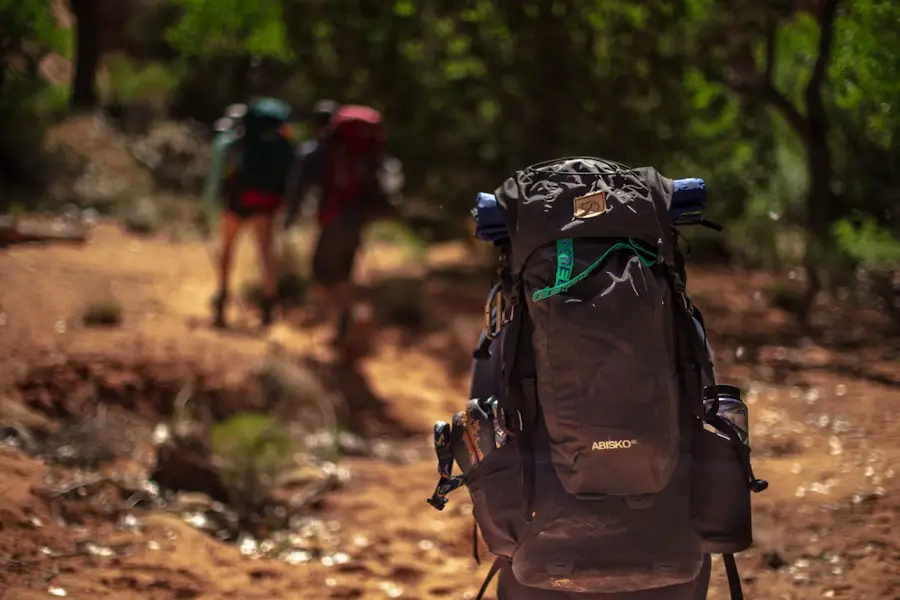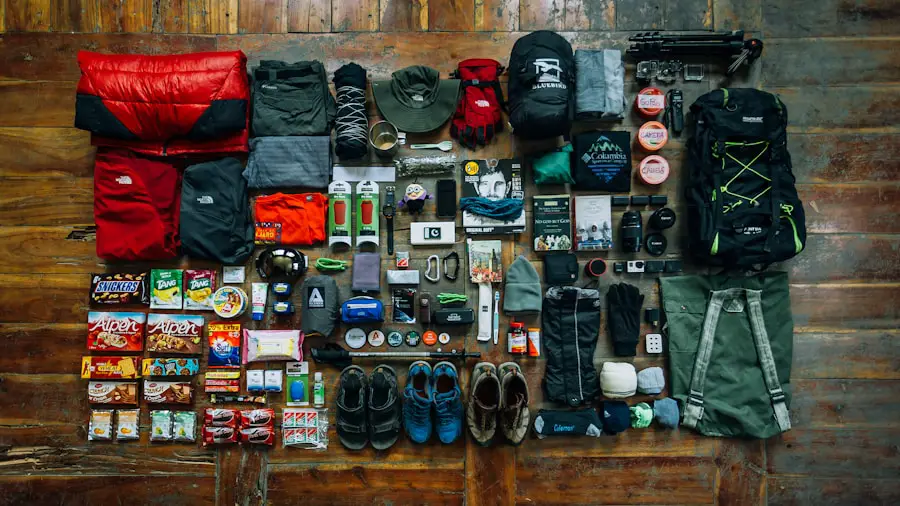When venturing into the great outdoors, the choice of clothing and footwear is paramount to ensure comfort, protection, and adaptability to changing weather conditions. The layering system is a fundamental principle in outdoor clothing, consisting of three main layers: the base layer, the insulating layer, and the outer layer. The base layer, typically made from moisture-wicking materials such as merino wool or synthetic fabrics, is designed to keep sweat away from the skin, thereby maintaining body temperature.
This is crucial during physical activities like hiking or climbing, where perspiration can lead to chilling if not properly managed. The insulating layer serves to trap body heat and can be made from materials like fleece or down. This layer is essential in cooler climates or during nighttime excursions when temperatures drop significantly.
The outer layer, often referred to as a shell, is designed to protect against wind, rain, and snow. Waterproof and breathable fabrics such as Gore-Tex are commonly used for this purpose, allowing moisture from sweat to escape while preventing external water from penetrating. Footwear is equally critical; sturdy hiking boots with good ankle support and a rugged sole are essential for navigating uneven terrain.
The choice between waterproof boots and breathable shoes depends on the environment and weather conditions expected during the outing.
Key Takeaways
- Choose clothing and footwear suitable for the terrain and weather conditions
- Carry navigation tools such as map, compass, and GPS for accurate direction
- Stay hydrated and well-nourished with a supply of water and high-energy snacks
- Pack safety and first aid essentials including a first aid kit and emergency whistle
- Bring shelter and protection gear like a tent, sleeping bag, and rain jacket for unpredictable weather
- Use a comfortable and adjustable backpack for carrying gear and distributing weight
- Maintain personal hygiene with items like hand sanitizer and biodegradable soap
- Carry emergency communication devices like a satellite phone or personal locator beacon for remote areas
Navigation Tools
In the wilderness, reliable navigation tools are indispensable for ensuring a safe and successful journey. Traditional methods such as maps and compasses remain relevant despite the advent of digital technology. A topographic map provides detailed information about the terrain, including elevation changes, water sources, and trails.
Understanding how to read these maps is a skill that can significantly enhance one’s ability to navigate through unfamiliar landscapes. Compasses complement maps by providing a reliable means of determining direction. Mastery of compass skills, including understanding magnetic declination and how to take bearings, is essential for effective navigation.
In addition to traditional tools, modern technology has introduced GPS devices and smartphone applications that offer real-time location tracking and route planning. These digital tools can be incredibly useful, especially in dense forests or mountainous regions where landmarks may be scarce. However, reliance solely on electronic devices can be risky due to battery life limitations and potential signal loss in remote areas.
Therefore, it is advisable to carry both traditional navigation tools and modern technology to ensure redundancy in navigation capabilities. Familiarity with both methods allows outdoor enthusiasts to adapt to various situations they may encounter.
Hydration and Nutrition

Proper hydration and nutrition are critical components of outdoor activities, directly impacting performance and overall well-being. Water is essential for maintaining energy levels, regulating body temperature, and preventing dehydration, which can lead to fatigue, dizziness, and impaired cognitive function. Carrying a sufficient supply of water is vital; this can be achieved through hydration packs or water bottles.
In areas where water sources are available, portable water filters or purification tablets can be invaluable for ensuring safe drinking water. Understanding how much water to consume based on activity level and environmental conditions is also crucial; a general guideline suggests drinking about half a liter of water per hour during moderate activity. Nutrition plays an equally important role in sustaining energy levels during outdoor excursions.
High-energy foods that are lightweight and easy to pack are ideal for hiking or camping trips. Options such as energy bars, nuts, dried fruits, and jerky provide quick sources of energy without adding excessive weight to one’s pack. For longer trips, planning meals that include carbohydrates, proteins, and fats can help maintain stamina throughout the day.
Freeze-dried meals have gained popularity among backpackers for their convenience and lightweight nature; they only require boiling water for preparation. Understanding the caloric needs based on the intensity of the activity can help in planning an adequate food supply.
Safety and First Aid
| Category | Metrics |
|---|---|
| Workplace Safety | Number of workplace accidents |
| First Aid Training | Percentage of employees trained in first aid |
| Emergency Response Time | Average time taken to respond to emergencies |
| Safety Inspections | Number of safety inspections conducted |
Safety should always be a top priority when engaging in outdoor activities. Being prepared for emergencies can make a significant difference in outcomes during unforeseen situations. A well-stocked first aid kit is an essential item for any outdoor adventure.
This kit should include items such as adhesive bandages, antiseptic wipes, gauze pads, adhesive tape, pain relievers, and any personal medications that may be necessary. Additionally, it’s wise to include items specific to the environment you’re in; for example, if hiking in areas with a high risk of insect bites or stings, including antihistamines or insect bite relief cream can be beneficial. Beyond physical injuries, understanding how to respond to various emergencies is crucial.
This includes knowledge of basic first aid techniques such as CPR, wound care, and how to recognize signs of heat exhaustion or hypothermia. Taking a wilderness first aid course can provide valuable skills that enhance safety during outdoor activities. Furthermore, having a plan in place for emergencies—such as knowing the nearest exit points or having a designated meeting place—can help ensure that all members of a group remain safe in case of separation or injury.
Shelter and Protection
When spending time outdoors, having adequate shelter is essential for protection against the elements. The type of shelter chosen will depend on the environment and duration of the stay. For short day hikes, a simple emergency bivy sack or space blanket may suffice for unexpected situations.
However, for longer excursions or camping trips, tents are typically the preferred option. Modern tents come in various designs suited for different conditions; three-season tents are versatile for most weather scenarios while four-season tents are built to withstand harsher winter conditions. In addition to tents, tarps can serve as an alternative shelter option that is lightweight and versatile.
They can be rigged in various configurations to provide protection from rain or sun while allowing for ventilation. Regardless of the type of shelter chosen, it’s important to consider factors such as location—avoiding low-lying areas prone to flooding or sites with dead trees that could fall—and proper setup techniques to ensure stability against wind or rain. Furthermore, understanding how to insulate oneself from cold ground temperatures using sleeping pads or insulated blankets can significantly enhance comfort during overnight stays.
Backpack and Carrying Gear

Selecting the right backpack is crucial for any outdoor adventure as it directly affects comfort and accessibility of gear during the journey. Backpacks come in various sizes and styles tailored for different activities; daypacks are ideal for short hikes while larger backpacks are designed for multi-day trips with ample storage capacity. When choosing a backpack, factors such as fit, weight distribution, and adjustability should be considered to ensure comfort over long distances.
Carrying gear also extends beyond just backpacks; it includes items like trekking poles that can provide stability on uneven terrain and reduce strain on joints during descents. Additionally, packing systems such as compression sacks can help maximize space within a backpack while keeping gear organized. It’s essential to pack efficiently by placing heavier items closer to the back for better weight distribution and ensuring frequently used items are easily accessible without having to unpack everything.
Personal Care and Hygiene
Maintaining personal care and hygiene while outdoors is often overlooked but remains an important aspect of any outdoor experience. Proper hygiene practices help prevent infections and promote overall well-being during extended trips in nature. Basic items such as biodegradable soap, toothbrushes, toothpaste, and hand sanitizer should be included in any packing list.
When washing up in natural water sources, it’s crucial to use biodegradable products to minimize environmental impact. Additionally, managing waste responsibly is vital for preserving natural spaces. Carrying out all trash—including food scraps—is essential in maintaining cleanliness in wilderness areas.
For personal hygiene needs such as toilet use, portable toilet kits or trowels for digging cat holes are necessary considerations when venturing into remote areas without facilities. Understanding Leave No Trace principles helps ensure that outdoor enthusiasts leave environments as they found them while also promoting sustainable practices.
Emergency Communication Devices
In an age where technology plays a significant role in our lives, having reliable communication devices during outdoor adventures cannot be overstated. While cell phones are commonly used for navigation and communication, their effectiveness can be limited by poor reception in remote areas. Therefore, carrying additional emergency communication devices such as satellite phones or personal locator beacons (PLBs) can provide peace of mind when venturing into isolated regions.
Satellite phones allow users to make calls from virtually anywhere on Earth by connecting directly to satellites rather than relying on cellular networks. Personal locator beacons serve as distress signals that can alert search-and-rescue teams in emergencies by transmitting GPS coordinates when activated. These devices are particularly valuable in situations where immediate assistance is required due to injury or severe weather conditions.
Understanding how these devices work and ensuring they are fully charged before embarking on an adventure enhances safety measures significantly while exploring the great outdoors.
When preparing for a hiking trip, it’s important to pack the right gear to ensure a safe and enjoyable experience. One essential item to consider bringing is a scarf with a hidden pocket, which can be used to store small valuables like keys or cash. Additionally, investing in a pair of traveler pants can provide comfort and functionality while on the trail. Another useful item to bring along is a rechargeable hand warmer to keep your hands warm during breaks or in colder weather. These items can help enhance your hiking experience and ensure you are well-prepared for any situation that may arise.
Love travel? Join Our Facebook Community For More Tips.
FAQs
What should I bring when hiking?
When hiking, it’s important to bring essential items such as water, food, navigation tools, first aid kit, appropriate clothing, and a backpack to carry everything.
How much water should I bring when hiking?
It’s recommended to bring at least 2 liters of water per person for a day hike. In hot or strenuous conditions, you may need to bring more.
What kind of food should I bring when hiking?
Pack lightweight, high-energy snacks such as trail mix, energy bars, and dried fruits. For longer hikes, consider bringing sandwiches, wraps, or other portable meals.
What navigation tools should I bring when hiking?
A map and compass are essential for navigation when hiking. Consider also bringing a GPS device or a smartphone with a reliable GPS app.
What should I include in a first aid kit for hiking?
A hiking first aid kit should include items such as adhesive bandages, gauze pads, antiseptic wipes, blister treatment, pain relievers, and any personal medications.
What clothing should I bring when hiking?
Wear moisture-wicking and quick-drying clothing, and dress in layers to accommodate changing weather conditions. Don’t forget to bring a hat, sunglasses, and sunscreen for sun protection.
What kind of backpack should I use for hiking?
Choose a comfortable, properly fitting backpack with enough capacity to carry all your essentials. Look for features such as padded shoulder straps, a waist belt, and multiple compartments for organization.

